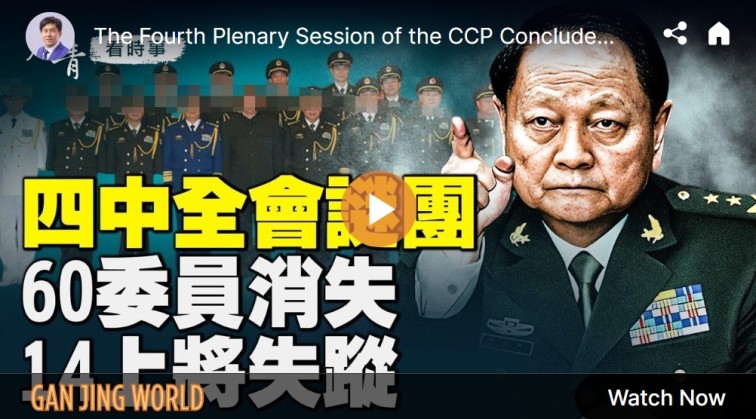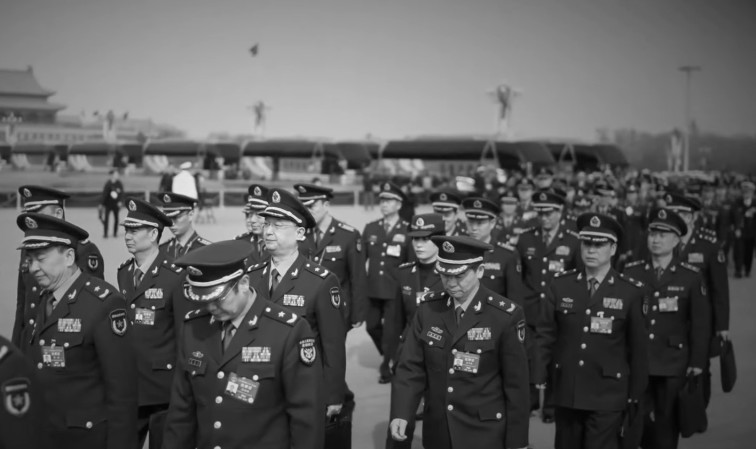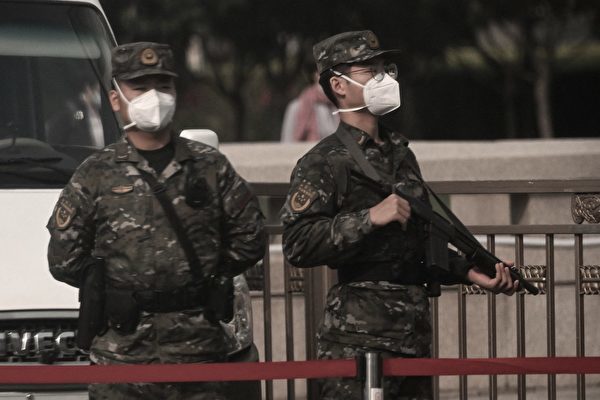Xi Jinping (People News)
[People News] Following the conclusion of the Fourth Plenary Session of the Communist Party of China, Xi Jinping made a surprising appearance at the Forbidden City in Beijing on October 27. Just after navigating the intense political struggles of the session and with plans to attend the APEC summit in Gyeongju, South Korea, in two days, Xi's unexpected visit to the Forbidden City has generated considerable speculation.
According to a report from state media Xinhua News Agency, Xi Jinping visited the Palace Museum on the morning of the 27th to attend the exhibition "A Century of Guardianship - From the Forbidden City to the Palace Museum," coinciding with the museum's 100th anniversary. He was accompanied by officials, including Cai Qi, a member of the Standing Committee of the Political Bureau of the CPC Central Committee and Secretary of the Central Secretariat, and Li Shulei, Minister of the Publicity Department.
The report noted that Xi Jinping stressed the importance of protecting the Forbidden City and enhancing its role, describing it as "a major matter for the country." He also suggested that the Forbidden City should serve as "an important base for patriotic education."
Xi Jinping's proposal to transform the Forbidden City into "an important base for patriotic education" has left many feeling both amused and perplexed.
In mainland China, the Forbidden City is typically introduced as a tourist destination: "The Beijing Forbidden City, also known as the Imperial Palace, is the most iconic palace in Chinese history and the largest and best-preserved wooden architectural complex in the world. The architectural ensemble of the Beijing Forbidden City is characterised by its red walls and yellow tiles, exuding a strong imperial atmosphere."
In the mainland junior high school Chinese textbook for the eighth grade, published by People's Education Press in 2009, there is a passage titled 'The Palace Museum.' This passage primarily summarises the overall layout of the Palace Museum, its external appearance, and architectural characteristics, while also introducing each palace individually.
These topics are entirely unrelated to the so-called 'patriotic education' advocated by Xi Jinping.
In reality, the 100th anniversary of the Palace Museum is not a major national event, and under normal circumstances, Xi Jinping would not need to attend. Interestingly, as a follower of Mao Zedong's ideology, Xi Jinping's visit to the Palace Museum contradicts Mao's established taboos.
When Mao Zedong became the first leader of the Communist Party of China, he firmly avoided both Yan'an and the Palace Museum.
Logically, Yan'an is considered an irreplaceable 'blessed land' for both the Communist Party and Mao himself, yet he never returned to Yan'an even once.
The Palace Museum and Zhongnanhai are merely separated by a wall; it has served as the imperial palace for over five hundred years during the Ming and Qing dynasties. It contains millions of invaluable cultural relics. Given Mao's thirst for power and his love for literature, one would expect him to frequent this place. However, he was advised by wise individuals that 'one must not enter; doing so would jeopardise the throne.' Reports from mainland media indicate that Mao Zedong climbed the walls of the Palace Museum three times to look out, but he never actually entered the Palace Museum.
According to reports, Mao Zedong once travelled to Hengshan to consult a blind fortune teller for a bone reading, where he received the eight-character prophecy: "born not to return, dead not to violate the taboo." The character "清" (Qing) in the Qing Dynasty symbolises the element of "water," and the official robes of the Qing Dynasty were predominantly black. Additionally, the Aisin Gioro family of the Qing Dynasty had a particular affinity for "crows," regarding the "black crow" as their family guardian deity. Since black is associated with "water," this makes the Forbidden City a place of "water." Mao Zedong believed he was the reincarnation of "Mars," referring to himself as the "red sun" and associating himself with "fire," which the Communist Party also embodies. As a result, during the Cultural Revolution, everything was colored red. Mao Zedong feared that "water" would extinguish "fire," which is why he was apprehensive about entering the Forbidden City. He also avoided the risk of being harmed by the vengeful spirits of past emperors residing within the Forbidden City. Therefore, Mao Zedong chose to live in Zhongnanhai, not far from the Forbidden City, and never set foot inside.
Why did Xi Jinping choose to visit the Forbidden City at this particular moment? Is he truly so leisurely that he wishes to admire cultural artefacts?
Some speculate that Xi Jinping's visit to the Forbidden City was actually to worship at a Vajrayana Buddhist hall and pay homage to esoteric beliefs. Xi Jinping's father, Xi Zhongxun, served as the second secretary of the Northwest Bureau of the Communist Party in the 1950s and was adept at united front work, maintaining particularly strong ties with the lamas of the Gelug school of Tibetan Buddhism. Reports from mainland media indicate that Xi Zhongxun had a 40-year friendship with the 10th Panchen Lama. Influenced by his father's beliefs, Xi Jinping also holds faith in supernatural powers. It is said that Xi Jinping and his wife, Peng Liyuan, are frequent visitors to Yonghe Temple, where statues of the Gelug school of Tibetan Buddhism are enshrined.
Within the Forbidden City lies a little-known and mysterious "Tibetan Buddhist world," rich with precious cultural relics.
The Qianlong period marked a mature phase in the Qing Dynasty's central government's policies regarding Tibet. Concurrently, within the Forbidden City, the Tibetan Buddhist halls had reached an impressive scale. The Buddhist halls currently existing in the Palace Museum have long been closed to the public, with nine of them preserving their original internal displays, known as 'original state Buddhist halls.' Among these, the Yuhua Pavilion stands out as the largest Vajrayana temple in the palace.
The Yuhua Pavilion houses the three principal deities of esoteric Buddhism depicted in a grand mandala, along with a wealth of Tibetan Buddhist art treasures, including thangkas, gilt bronze statues, and ritual implements. These include masterpieces crafted by artisans from the Qing Palace's Imperial Workshop and lamas from the Zhongzheng Hall, as well as valuable works from various periods in Tibet, India, and Nepal, which were tributes offered to the emperor by regions such as Tibet and Mongolia.
Research by former Palace Museum director Shan Zhixiang indicates that since the introduction of Tibetan Buddhism to Han areas during the Yuan Dynasty, the Yuhua Pavilion has, for the first time, provided a comprehensive and systematic representation of the ideas of the four texts of esoteric Buddhism and their pantheon through three-dimensional architecture and sculptures, a phenomenon not found in Tibet. Shan Zhixiang remarked, 'The Yuhua Pavilion differs from other Buddhist halls where incense is burned and prayers are recited; it contains a strong element of doctrinal proclamation. This illustrates that while Emperor Qianlong accepted Tibetan Buddhism, he was also investigating how to systematise and standardise the intricate pantheon of Tibetan esotericism.'
Is Xi Jinping really seeking the secret teachings of Vajrayana Buddhism to secure his position and live to 150 years old? There are rampant rumours that he has lost military authority, his regime is in jeopardy, and his health is in question. Furthermore, there are even allegations that he is resorting to sacrificial sorcery to extend his life, which resulted in the tragic death of mainland actor Yu Menglong. Currently, the entire world is on a quest for the truth, causing a significant uproar. How long will Xi Jinping continue to turn a blind eye and feign ignorance?
(First published by People News)
△











News magazine bootstrap themes!
I like this themes, fast loading and look profesional
Thank you Carlos!
You're welcome!
Please support me with give positive rating!
Yes Sure!